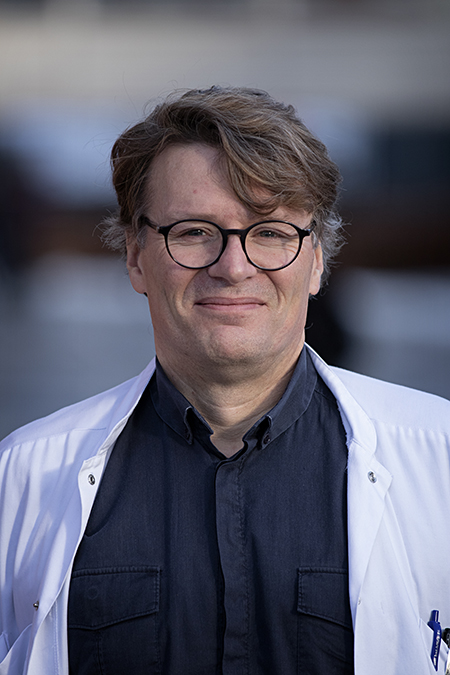Sex chromosome abnormalities – a key to map the genes
Meet Claus Gravholt
“Turner and Klinefelter Syndrome are rare chromosome defects, but common reasons for not producing estrogen and testosterone. An important goal, of course, is to help the patients I meet in the clinic, so that we hopefully someday can stop saying ‘you’ll never have children in a so-called natural way.'”
Is it possible to map the genes that prevent women with Turner Syndrome from becoming mothers - and men with Klinefelter Syndrome from having children of their own? And can we utilize that knowledge for use in other contexts? These are important questions for clinical professor Claus Højbjerg Gravholt, born 1962, who is a researcher in the field of sex chromosome abnormalities.
Claus Højbjerg Gravholt currently investigates the possibility of finding living sperm in testicles, donated by 14 hopeful Klinefelter men, who have nothing to lose since the sex chromosome disease renders them infertile. Another research project examines the ovaries, removed from women who suffer from another sex chromosome disease, Turner Syndrome, in the hope to find follicles – possible viable eggs. Both projects also aims to uncover the causes of infertility in both conditions.
What if they were model system diseases?
“Turner and Klinefelter Syndrome are rare chromosome defects, but common reasons for not producing estrogen and testosterone. An important goal, of course, is to help the patients I meet in the clinic, so that we hopefully someday can stop saying ‘you’ll never have children in a so-called natural way’", Claus Højbjerg Gravholt says.
“I see Turner Syndrome and Klinefelter Syndrome as model system diseases and hypothesize that if I can find out which genes are involved in these disease processes, the knowledge will be transferable to many other areas," he adds when summarizing the big dream.

From blood samples to zebrafish models
Males with Klinefelter syndrome have an extra X chromosome and suffer from a wide range of diseases, in addition to infertility, such as type 2 diabetes and autoimmune disease. Women with Turner syndrome have only one X chromosome and suffer from the same diseases plus a frequent occurrence of congenital cardiovascular malformations. Thus, Gravholt says, there is an overlap between having one too few and one too many X chromosomes, but there is still a lot we do not understand about the genetics in the disease processes.
Methodologically Claus Højbjerg Gravholt uses ample patient material such as blood samples, muscles, fat, testis and ovarian biopsies. In most cases we then examine the impact of candidate genes in a zebrafish model, and thus hope to confirm which genes are involved in the different disease processes.
Read more at Claus Højbjerg Gravholt's profile at Researchgate